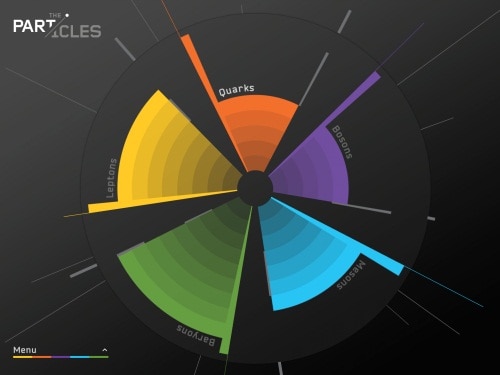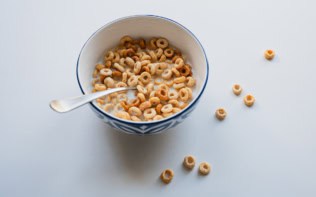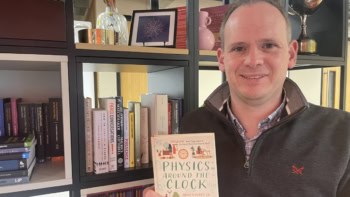
By Hamish Johnston
The physicist and best-selling author Frank Close has joined forces with Michael Marten – founder of the Science Photo Library (SPL) – and CERN Courier editor Christine Sutton to create a new app about particle physics. Called The Particles, the app is billed as an introduction to the Standard Model and is aimed at a wide audience that includes professional physicists, students and even amateur enthusiasts.
I have been playing around with the app on an iPad and I am really impressed by the content and presentation. For me at least, the physics is pitched at the perfect level. I have a background in condensed-matter physics and I sometimes struggle to keep all those particles straight in my head. The app organizes particles by type, presenting them as slices in an interactive pie chart (see image above).
Click on a particle type – say leptons – and you get a list of leptons. Click again on the tau particle and a description of the particle and how and when it was discovered appears. A concise description of the particle’s properties such as spin, mass, etc, is also available behind a data tab.
The app is illustrated using pictures from the SPL and Michael Marten has done a great job of selecting appropriate images. The sections on many particles are illustrated using actual data such as bubble chamber images or collision reconstructions. Rather than being just eye candy, these data are often accompanied by comprehensive captions describing exactly what is being detected and how.
Not surprisingly, the app has a section devoted to the Higgs boson, which SPL says will be updated as new information arrives from the Large Hadron Collider. The Higgs section includes an animation of a collision event at the ATLAS detector as well as information on the most important decay channels of the Higgs particle.
Beyond particles, the app also has brief biographies of important particle physicists as well as information about colliders and experiments. The trio take a somewhat personal approach to the biographies – correcting what they perceive as injustices. In the entry for Satyendra Bose, the app points out that although the Indian physicist didn’t win a Nobel prize for his pioneering work on Bose–Einstein statistics, several prizes have been since been awarded to others working in that field.
The app also gives the reader some idea of the more practical applications of particle-physics discoveries. The section on the neutron, for example, looks at the particle’s role in nuclear fission as well as the many scientific uses of neutron scattering.
I spoke with Marten and Close in the run-up to the launch and they described the app as a boon for “lazy lecturers” as much of its content could be incorporated into lectures. I also expect it to be popular with students studying particle physics for the first time – and I can also see someone like myself using it as a reference when writing about particle physics. And beyond these practical uses, I think the app would appeal to a non-physicist with an interest in particle physics.
Any complaints? An Android version would be great for my phone.
The app is available for the Apple iPad, Windows 8 and Microsoft Surface and costs £4.99/$7.99/€5.99.
There is more information about The Particles here.



